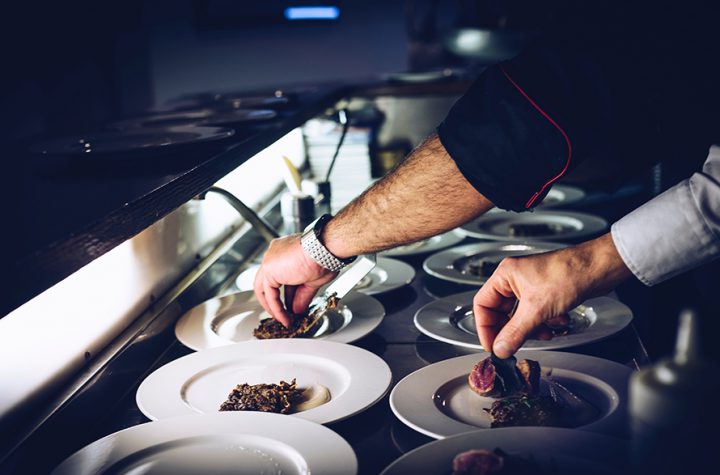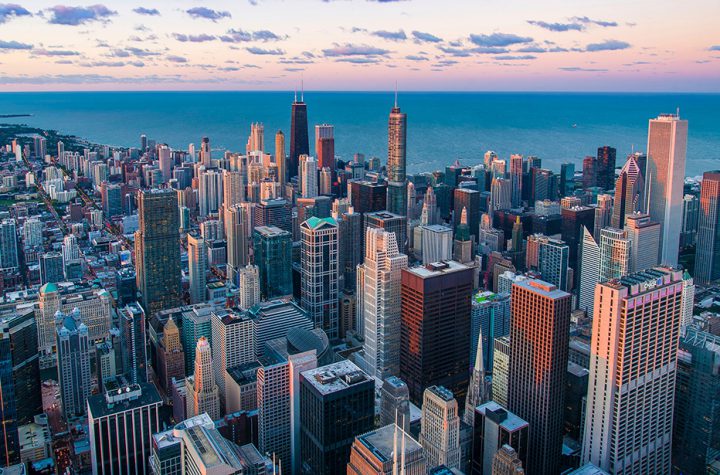
(CNN)Some seven months into a pandemic that has killed more than 200,000 Americans, the nation is now facing a grave governing crisis with its commander in chief hospitalized — his condition hinging on his progress over the coming days –as the White House events of the past week serve as a textbook example of how not to handle a deadly virus.
Late Saturday night, the public learned new details about why President Donald Trump was airlifted to the hospital Friday, when chief of staff Mark Meadows said during an interview with Fox Newsthat Trump had a fever on Friday morning and his oxygen level had”dropped rapidly.” Meadows added that Trump has made “unbelievable improvements from yesterday morning.”
A memo from Trump’s physician earlier Saturday night said that Trump had “made substantial progress” since his diagnosis but “is not yet out of the woods.”
Speaking from a White House that already has a huge credibility problem with the public, Meadows’ statement capped a 24-hour period that served as a master class in opacity and contradiction that raised major questions about the President’s health — and renewed questions about this administration’s ability to tell the truth.
The President became furious at Meadows earlier in the day, according to reporting Saturday night by the New York Times, when the chief of staff gave a statement to the press pool as an unnamed official stating that the President’s vitals Friday were “very concerning,” hinting that his condition was more worrisome than his doctors let on.
For much of this year, Trump has spun an alternate reality about the dangers of coronavirus disputing science and the efficacy of masks, downplaying the risks to the American people, and making false statements about how 99% of coronavirus cases in America are “totally harmless” or that the virus “affects virtually nobody.”
He encouraged his aides and advisers to live in that dangerous fantasy land, pushing his luck to the limits as late as this past week when he again recklessly gathered thousands of unmasked Americans at his political rallies and packed the top officials in government into a Rose Garden ceremony for his Supreme Court nominee. All the while, White House officials embraced the fallacy that administering rapid coronavirus tests frequently at the White House could provide a shield of immunity.
The President’s construct crumbled Friday when he was airlifted to Walter Reed after contracting the virus, while many aides, advisers and allies were testing positive for Covid-19 after interacting with him over the past week.
The White House seemed to be continuing to downplay concerns about the severity of the virus Saturday morning when the President’s physician, Navy Cmdr. Dr. Sean Conley, gave a news conference at Walter Reed where he described the President as upbeat and feeling good, without revealing any of the alarming developments with his oxygen levels the day before.
Undermining the confidence in the information coming from the White House, Conley gave confusing statements Saturday morning about how long it’s been since thePresident was diagnosed with Covid-19, which he later had to try to clean up.
Conley was evasive about whether the President had received supplemental oxygen (CNN confirmed he had). Conley also refused to pinpoint when the President had his last negative test or to detail whether any tracing had been done to determine how he contracted the virus.
A potential superspreading event at the White House
Many of the Trump aides or contacts who have recentlytested positive for Covid-19attended the White House festivities honoring Supreme Court nominee Amy Coney Barrett on September 26, in the Rose Garden.
At least seven people attending the event, including the President and first lady, have tested positive. University of Notre Dame President the Rev. John Jenkins, former counselor to the President Kellyanne Conway and Republican Sens. Mike Lee of Utah and Thom Tillis of North Carolina, who were seated relatively close to each other, tested positive. Former New Jersey Gov. Chris Christie also tested positive and checked himself into the hospital Saturday as a precautionary measure, because he has asthma.
Conway, Christie, Trump’s senior adviser Hope Hicks and his campaign manager Bill Stepien who have all tested positive were also all involved in debate prep ahead of Trump’s Tuesday clash with Democratic nominee Joe Biden.
It “seems highly likely this originated at the SCOTUS announcement last week,” a senior administration official told CNN’s Jake Tapper of the outbreak among GOP officials. “It may have come from the Hill. The next major concern will be securing Capitol Hill and protecting lawmakers,” the official added.
Trump did not address anyone else’s diagnosis during his video message from Walter Reed Saturday. As he praised the medical care he had received at Walter Reed, he sought to spin his hospitalization to his advantage by making it sound like his diagnosis had been inevitable, even though he took few precautions to prevent it.
The President said he was “starting to feel good” and that he was receiving therapeutics he said are like “miracles coming down from God.”
“This was something that’s happened, and it’s happened to millions of people all over the world and I’m fighting for them, not just in the US,” Trump said. “We’re gonna beat this coronavirus or whatever you want to call it and we’re gonna beat it soundly.”
Thanking the American people for their well wishes, Trump said the true nature of his condition would be revealed in the coming days: “You don’t know. Over the next period of a few days, I guess that’s the real test, so we’ll be seeing what happens over those next couple of days,” Trump said.
The President said the decision to go to Walter Reed on Friday was his. He suggested he didn’t like the prospect of staying isolated at the residence: “Lock yourself in, don’t ever leave, don’t even go to the Oval Office, just stay upstairs and enjoy it, don’t see people, don’t talk to people and just be done with it.”
That statement from Trump, clearly attempting to make himself look like a decision-maker in command of the situation, contradicts reporting from CNN’s Kevin Liptak and Kaitlan Collins that the President was reluctant to go to the hospital.
“I had to be out front and this is America, this is the United States, this is the greatest country in the world, this is the most powerful country in the world,” Trump continued in the video. “I can’t be locked up in a room upstairs and totally safe, and just say, hey whatever happens, happens. I can’t do that.”
White House concerns about optics
The President appeared to be breathing and talking without effort during the video released Saturday, but it remains unclear how severe his symptoms have been, beyond Meadows’ comments to Fox Saturday night.
There is a long history of White House officials covering up or obfuscating about the medical condition of the sitting President from Grover Cleveland’s secret surgery to remove a tumor in his mouth aboard a friend’s yacht, to John F. Kennedy hiding his Addison’s disease.
Officials in the Trump White House have carefully calibrated their statements about the President’s health over the past few days in what seems like an effort to put the best face on the diagnosis at a time when the President is 30 days from Election Dayand trailing in the polls. Mail-in voting has already begun in certain states across the country.
The President tweeted that he had tested positive for coronavirus around 1 a.m. ET Friday, hours after attending a Thursday night fundraiser in Bedminster, New Jersey, where he met with a small group of donors indoors with no masks, before addressing a larger crowd outdoors. Trump got his first positive coronavirus test result Thursday after returning from that trip, a White House official said Saturday evening.
Hicks had begun experiencing symptoms the previous night while accompanying the President on his trip to Minnesota for a fundraiser and rally Wednesday night. It’s unclear whether the President was tested around that same time, given how closely they work together.
On Friday, Meadows at first described the President as energetic with mild symptoms. But the President was abruptly taken to Walter Reed Friday evening in what officials described as an “abundance of caution.” Other sources told CNN Friday that the President had a fever and some trouble breathing.
On Saturday morning, Conley acknowledged that the President had a fever at one point, but refused to say what his temperature was or give the press a rundown on the President’s vital signs.
He declined to say whether medical tests had revealed any damage to the President’s lungs. And he also would not say how many people in the President’s orbit may have been exposed, given that Trump rarely wears a mask. One of the White House aides who works closest to Trump has tested positive, a White House official confirmed to CNN.
Conley was most evasive about whether the President was given supplemental oxygen, repeatedly stating that thePresident was not currently receiving any. Another Walter Reed doctor treating the President told reporters at the Saturday morning news conference that Trump told doctors: “I feel like I could walk out of here today.”
Conley said Trump had been fever-free for 24 hours and had experienced an “extremely mild cough,” nasal congestion and fatigue.
But Conley’s rosy pronouncements were contradicted minutes later in a statement that was given to pool reporters from a source familiar with Trump’s health, who was later identified by the New York Times and the Associated Press as Meadows.
“The President’s vitals over the last 24 hours were very concerning and the next 48 hours will be critical in terms of his care. We are still not on a clear path to a full recovery,” the source later identified as Meadows told pool reporters.
That’s the statement, according to the New York Times, that made Trump furious at Meadows and prompted the President to take to Twitter to say he was feeling well.
On Saturday evening, Conley said in a memo that the President “remains fever-free and off supplemental oxygen with a saturation level between 96% and 98% all day,” which is within the normal range for blood oxygen levels.
While the President was still at the White House Friday, he was administered the experimental Regeneron antibody cocktail, a promising treatment that has not yet been approved by the Food and Drug Administration that was intended to help boost the President’s immune system as he fights the virus.
Once Trump was at Walter Reed, doctors initiated the antiviral drug remdesivir. He is receiving a five-day course of the drug, which has been shown to shorten recovery time for some coronavirus patients.





More Stories
Justice Rajiv Shakdher also asked the media houses AGR Outlier Media Pvt Ltd. and Bennett Coleman and Company Ltd. to ensure that no defamatory content is uploaded on social media platforms or displayed on their channels.
Two people have become the first passengers on a Hyperloop, a technology considered to be the future of high-speed ground transport.